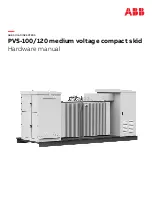
- 16 -
Technical Data
VCC 1212-25
VCC 1212-45
VCC 2412-25
VCC 2412-45
Li
Li
Li
Li
Input IN Starter Battery "II":
Nominal Voltage Battery:
12 V
12 V
24 V
24 V
Battery Capacity min.:
60 Ah
80 Ah
50 Ah
60 Ah
Power Consumption max.:
480 W
720 W
450 W
740 W
Current Consumption (at lowest input voltage) max.:
37 A
63 A
18 A
30 A
Current Consumption during Stand-by:
0.07 A
0.08 A
0.09 A
0.11 A
Current Consumption OFF (D+ or K1.15 without Signal):
0.0004 A
0.0004 A
0.0004 A
0.0005 A
Overvoltage Disconnection EURO 6+:
16.50 V
16.50 V
32.20 V
32.20 V
Output OUT Board Battery "I":
Nominal Voltage Battery:
12.8 - 13.2 V
12.8 - 13.2 V
12.8 - 13.2 V
12.8 - 13.2 V
Battery Capacity LiFePO4 (recommended):
50-170 Ah
90-300 Ah
50-170 Ah
90-300 Ah
Battery Capacity LiFePO4 (acc. to case of application):
50-220 Ah
90-400 Ah
50-220 Ah
90-400 Ah
Charging Current Main Charging, Phase
I
, 8 V up to U1, 0-15 h: 25 A
45 A
25 A
45 A
Charging/Floating/Load Current, controlled, Phase U1-U2-U3: 0 - 25 A
0 - 45 A
0 - 25 A
0 - 45 A
Selectable Charging Characteristic Lines LiFePo4:
4
4
4
4
Minimum Battery Voltage for Charging Start (Lead):
0 V
0 V
0 V
0 V
Prelim. Charg. Current (Deeply Discharged Battery):
12.5 A (0-8 V)
22.5 A (0-8 V)
12.5 A (0-8 V)
22.5 A (0-8 V)
Reverse Current from Battery, OFF (D+/Kl.15 without Signal): 0.000 A
0.000 A
0.000 A
0.000 A
Reset Voltage (30 sec):
12.75 V
12.75 V
12.75 V
12.75 V
Limit of Charging Voltage (Consumer Protection):
15.00 V
15.00 V
15.00 V
15.00 V
External Overvoltage Disconnection (20 sec.):
15.20 V
15.20 V
15.20 V
15.20 V
Ripple Factor Voltage:
< 30 mV rms
< 30 mV rms
< 30 mV rms
< 30 mV rms
Input for Battery I Temperature Sensor:
Yes
Yes
Yes
Yes
Charging Timer:
3-fold
3-fold
3-fold
3-fold
Safety Protect. ag. Reverse Batt./Short-circuit/Back Discharge: Yes
Yes
Yes
Yes
Safety Timer per Charging Phase I /U1/ (U2):
Yes
Yes
Yes
Yes
EBL START In, EVS Measuring Input/Charging Port:
Yes
Yes
--
--
Charging/Trickle Charging for Starter Battery 12 V:
0...3 A
0...3 A
--
--
Overcharge Protection:
Yes
Yes
--
--
Safety Protect. ag. Reverse Batt./Short-circuit/Back Discharge: Yes
Yes
--
--
Fitting Position of Unit:
any
any
any
any
Temperature Range:
-20/+45 °C
-20/+45 °C
-20/+45 °C
-20/+45 °C
Speed-controlled, temperature-controlled Fan:
Yes
Yes
Yes
Yes
Gradual Reduction of Charging Capacity at Overtemperature: Yes
Yes
Yes
Yes
Safety Disconnection in Case of Overheating:
Yes
Yes
Yes
Yes
System of Protection
IP21
IP21
IP21
IP21
Weight:
1350 g
1700 g
1350 g
1700 g
Dimensions, incl. Mounting Flanges (mm):
245 x 160 x 71
Ambient Conditions, Humidity of Air:
max. 95 % RH, no condensation
Declaration of Conformity:
In accordance with the provisions of Directives 2014/35/EU, 2014/30/EU, 2009/19/EC, this
product complies with the following standards or normative documents:
EN55014-1; EN55022 B; EN61000-6-1; EN61000-4-2; EN61000-4-3; EN61000-4-4;
EN62368-1; EN50498.
The product
must not be
disposed of in
the household
waste.
The product is RoHS compliant.
It complies with the directive
2011/65/EU for Reduction of
Hazardous Substances in electrical
and electronic equipment.
Delivery Scope:
•
Charging Converter
•
Temperature Sensor 825
•
Operating Manual
Available Accessories:
•
Remote Control S for Automatic Charger
Order No. 2075
Subject to misprints, errors and technical modification without notice.
All rights reserved, particularly the right of reproduction. Copyright
VOTRONIC 07/2018.
Made in Germany by VOTRONIC Elektronik-Systeme GmbH, Johann-Friedrich-Diehm-Str. 10, 36341 Lauterbach/GERMANY
Phone: +49 (0)6641/91173-0 Fax: +49 (0)6641/91173-20 E-mail: [email protected] Internet: www.votronic.de
































